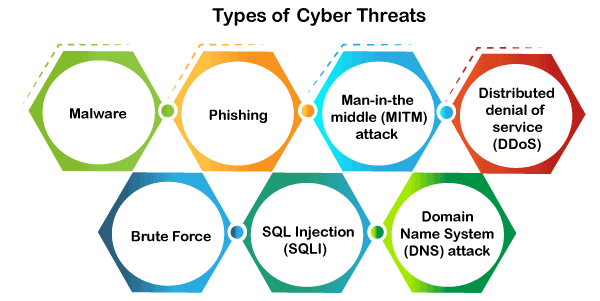A threat in cybersecurity is a malicious activity by an individual or organization to corrupt or steal data, gain access to a network, or disrupts digital life in general. The cyber community defines the following threats available today:
Malware
Malware means malicious software, which is the most common cyber attacking tool. It is used by the cybercriminal or hacker to disrupt or damage a legitimate user’s system. The following are the important types of malware created by the hacker:
Virus: It is a malicious piece of code that spreads from one device to another. It can clean files and spreads throughout a computer system, infecting files, stoles information, or damage device.
Spyware: It is a software that secretly records information about user activities on their system. For example, spyware could capture credit card details that can be used by the cybercriminals for unauthorized shopping, money withdrawing, etc.
Trojans: It is a type of malware or code that appears as legitimate software or file to fool us into downloading and running. Its primary purpose is to corrupt or steal data from our device or do other harmful activities on our network.
Ransomware: It’s a piece of software that encrypts a user’s files and data on a device, rendering them unusable or erasing. Then, a monetary ransom is demanded by malicious actors for decryption.
Worms: It is a piece of software that spreads copies of itself from device to device without human interaction. It does not require them to attach themselves to any program to steal or damage the data.
Adware: It is an advertising software used to spread malware and displays advertisements on our device. It is an unwanted program that is installed without the user’s permission. The main objective of this program is to generate revenue for its developer by showing the ads on their browser.
Botnets: It is a collection of internet-connected malware-infected devices that allow cybercriminals to control them. It enables cybercriminals to get credentials leaks, unauthorized access, and data theft without the user’s permission.



Leave a Reply